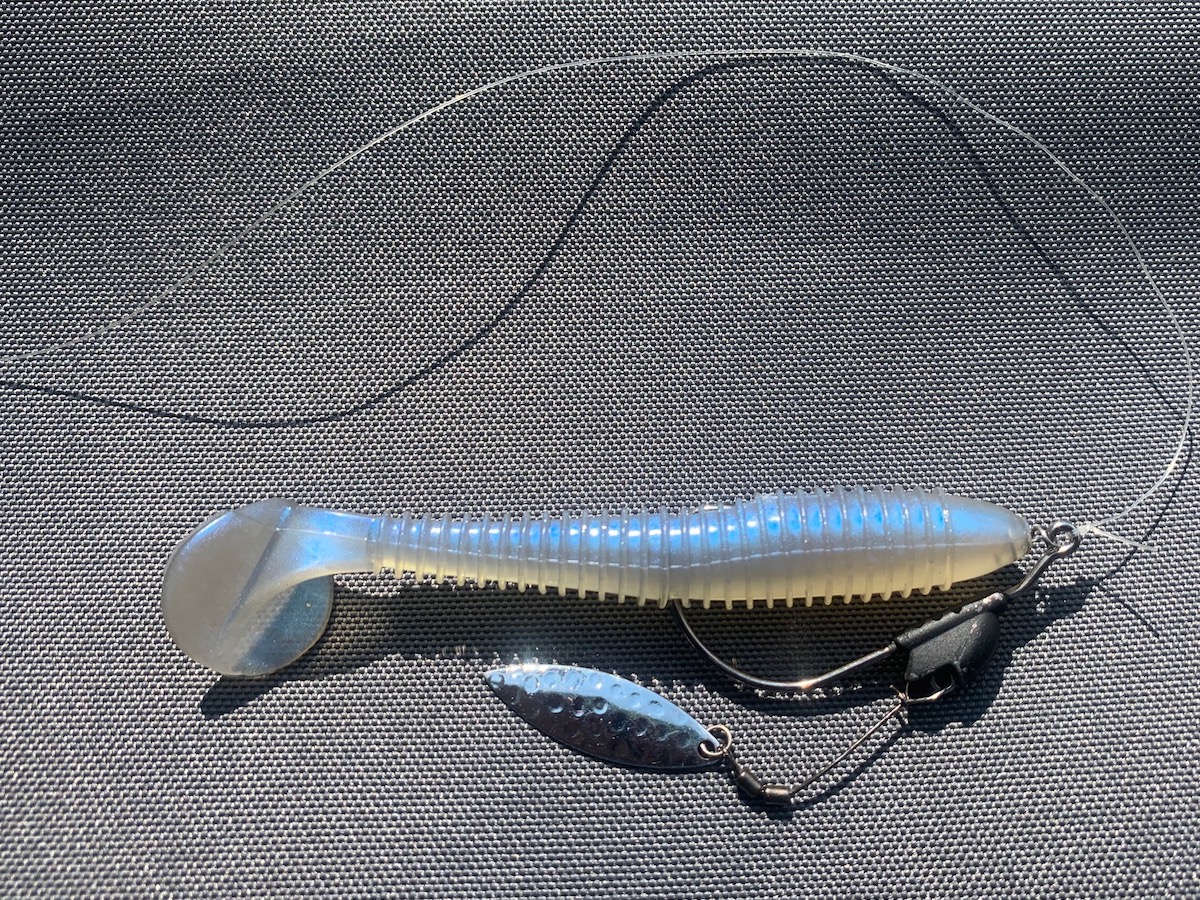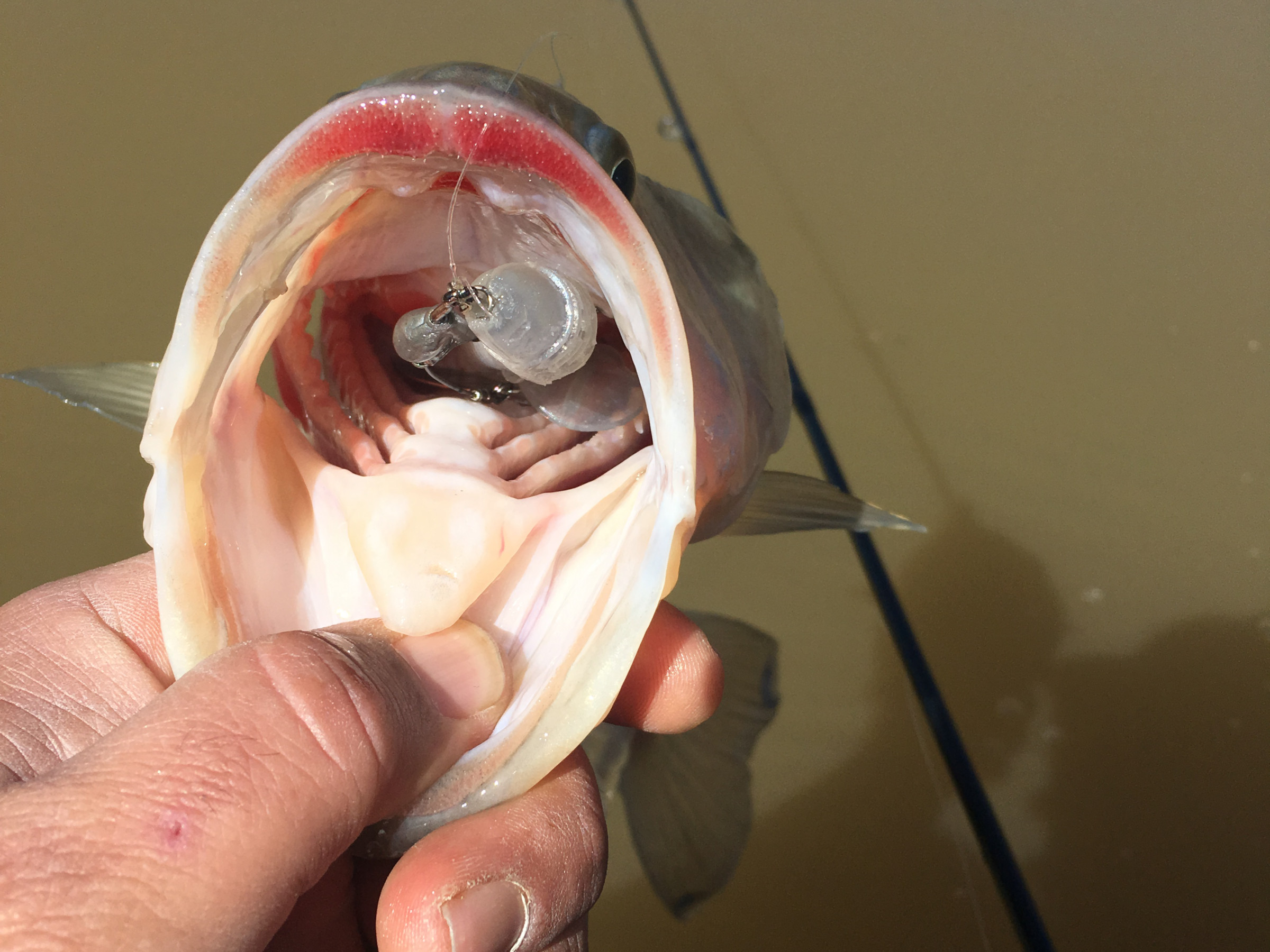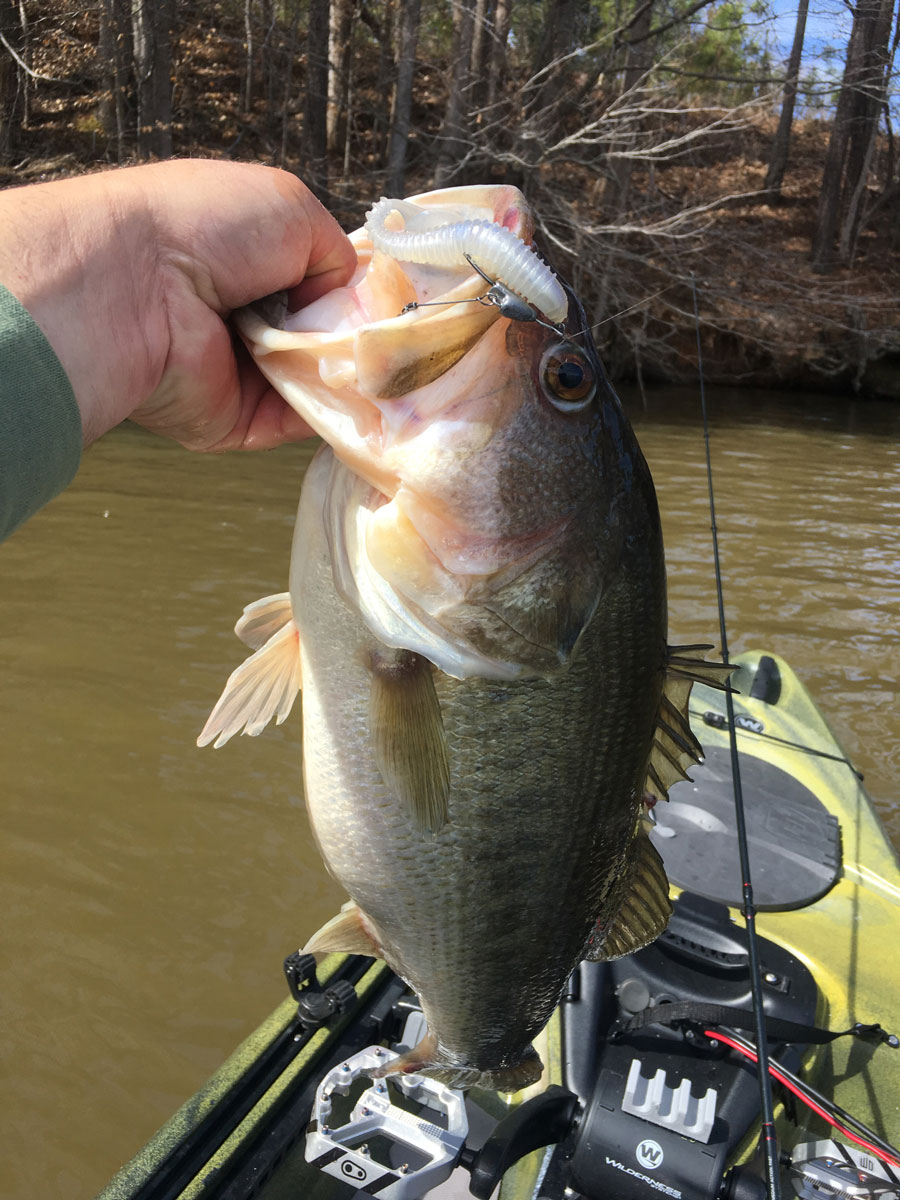Tips and Reviews
Weedless Underspin Swimbaits
Earlier this year I decided to start throwing weedless underspin swimbaits, and I have yet to want to put this little setup away. If you haven’t thrown one of these yet, or want some tips to put more fish in the boat, you came to the right place.
The classic underspin
The more popular type of underpin baits are painted lead jigs with a willow leaf blade that spins underneath the jig head, You can attach just about anything to them you desire, the more popular choice in recent years would be soft plastic swimbaits in the 3”-4” range is typical for bass fisherman. The hook is exposed on the top of the bait, which lends itself to easy hook ups.
These baits work great fishing in all areas of the water column from just under the surface to the bottom. The down side to the exposed hooks are getting hung up in cover. Lay downs, brush piles and rip rap can all be major hazards.
We aren’t going into detail on these, but I wanted to make sure the distinction is made between the types.
The weedless underspin
The type we will discuss today however, are the fairly new weedless underspins, which unleash loads of new possibilities on where and how you can fish these baits. These use hooks with the blade attached to the weight on the shaft of a wide-gap hook.

The bait is rigged up Texas style, using the twist lock to go into the head of the swimbait, then putting the hook through the bait and skin hooking the point to protect it from hanging up.
When to fish
I started playing around with these set ups in late winter, just as some fish were contemplating the move to the spawning grounds. I have yet to put this down, it has produced the most fish for me since around that time, especially when I figured out a few tricks to get the bites I was looking for.
Rod setup
You will want a heavy rod and line to pull the fish out of cover as well as for setting the hook. Mid-range reel gearing works best because you need the slow retrieve ability as well as being able to catch up to the fish when they knock slack in the line. I prefer the fluorocarbon line for abrasion resistance rather than for visibility. Visibility not being as important because this is a reaction bite the majority of the time. There are times where a bass will follow for a long distance before committing however.

Where to fish
Anywhere there is cover, or structure that is holding fish is where you want to throw this set up.
- Lay downs
- Docks
- Grass
- Points
- Rock Piles
- Flooded Timber
The nice thing about how these baits are trigged is they will go anywhere and come back out. The heavy wire hook also allows you to rip the fish away from the cover quickly without risking bending or breaking the hook.
How to retrieve
The most important thing about the set up is to bang it into and through everything. This is a reaction strike bait, and deflecting the blades off of cover like a spinnerbait is the best way to get a bite, especially on tough days.
- Bounce off logs
- Run it through grass or ticking the top
- Pop it out of grass
- Dragging the bottom
You need to be “feeling” the cover or structure you are fishing. Not that you can’t get bit when just retrieving through the water column. Followers may need a pause or twitch to get them to commit, getting that instinctive reaction from the bass.
Keep the retrieve slow and steady. In some cases the retrieve needs to be so slow that you are dragging the blade, and the blade is not even spinning. I’m not sure if its the sound of the blade scraping the bottom or if the blade is making smaller movements and flash, but it seems to get the bites when the bite is tough.
Bait selection
Most of the time a 3.5” to 3.8” boot tail swimbait is going to get the job done. There are tons of boot tail swimbaits on the market, and you can experiment with sizes, brands and colors to match the baitfish where you are fishing.
I keep the color choices as simple as possible, mainly using shad imitations with white base colors. Ghost Shad, Tennessee Shad, or plain white even depending on water clarity. Most of the lakes I have fished feed heavy on shad.
Terminal Tackle
There are some options out there but you need to have the right size and quality hooks to get these bass hooked up and out of cover. Cheap hooks will bend or break and you need the strength as well as the sharpness of a quality hook to handle the cover.
Water clarity
Most water types will work with willow leaf blades and more natural colors.
If you are fishing in muddy water with visibility less than a foot, I would recommend using predominantly white baits with the willow leaf or you can even try the Colorado blade.
The first fish I caught on this set up was in muddy water with the willow leaf blade, reeling through some underwater brush. This is when banging into the cover is essential.

Setting the hook
This has to be the best part of this entire how-to! Honestly I don’t know that I have thrown a bait that gets as violent of a strike on a consistent basis that this one does. The only time I have to replace hooks is after a violent attack breaks off the blade. When you get the strike, all you need to do is to lean into the fish hard and start reeling, the heavy rod and sharp hooks will do the rest.
The occasional subtle bites will feel like something is nibbling on the tail. Most times what you are feeling is the lure hitting back of the fish’s mouth. This is the only time where you want to wait until you feel the rod start to load up before leaning into it. If you try to set the hook immediately, you can and will pull the bait right out of the fishes mouth. The best thing to do is to continue reeling in, because sometimes they may “bang” the bait before committing to eating it. Patience here will pay off!
Recommended items:
Zee Baits 3.75” Xswimmer Boot Tail
Eric Nelson
Professional Kayak Bass Angler
Biography
I was born in Southeastern Massachusetts, where I began fishing for bass when I was in my early teenage years, graduating to competitive bass tournaments in my late 20’s. I moved to North Carolina in 2015 and found the passion for bass fishing from a kayak, and quickly became involved in both the local and national kayak bass tournament scenes. My fishing skills have allowed me to qualify for almost every major event since joining the clubs, be it at a club, state and even national level.
Being a professional in the online web development and design field for publications, I have always used my skills to help promote the clubs and the sport as a whole in my spare time. I have been a part of the club directors for Cape Cod Bass, and now for Carolina Kayak Anglers, one of the larger kayak clubs in the country. I am also a part of the national KBF tournament advisory board.
The Kayak Bass Fishing (KBF) format has allowed me to travel across the United States, fishing against the best fisherman in the country. Now with the KBF Pro format, and the merging with the FLW organization, I am looking forward to where this adventure takes me in the future.
Highlights
Total Career Earnings - $3,250
Competition Highlights
Inaugural FLW / KBF Cup Championship Qualified 2019 - Hot Springs, AK
KBF National Championship Qualified 2020 - Lake Guntersville, AL
KBF Challenge Championship 2018 - Toledo Bend, LA
2019 KBF National Championship - 57th overall out of 462 anglers - Shreveport, LA
KBF Regional Trail Championship Qualified 2019 - Lake Wheeler, AL
KBF National Trail Championship Qualified 2019 - La Crosse, WI
2nd Place 2018 KBF National Trail - High Rock Lake, NC
2nd Place 2019 - Plastic Pirates - Randleman Lake, NC
11th Place - 2019 KBF Southeastern Region Trail - Santee Cooper Lakes, SC
13th Place - 2019 KBF Southeastern Region Trail - Chickamauga Lake, TN
46th Place 2019 FLW / KBF Cup Qualifier - Nickajack Lake, TN
2nd Place - Plastic Pirates - Randleman Lake 2019
1st Place - Cape Cod Bass, 2002 - Lake Winnipesaukee, NH
1st Place - Cape Cod Bass, 2008 - Glenn Charlie Pond, MA
More Details
When to Fish: Anytime
Rod: 7' to 7' 6" Heavy - Fast Action
Reel: 6.x to 7.x
Line: 15-20 lb. Flourocarbon
Cover: Light to Heavy
Presentation: Slow to Extremely Slow
Water Column: Bottom
Hookset: Lean hard and reel
Weight: 1/4 -1/2 oz depending on depth
Hook Size: 3 to 3.75" swimbait 3/0

Comments
Be the first to comment on this article!